Maxim Sharaev
Biologically Inspired Deep Learning Approaches for Fetal Ultrasound Image Classification
Jun 10, 2025Abstract:Accurate classification of second-trimester fetal ultrasound images remains challenging due to low image quality, high intra-class variability, and significant class imbalance. In this work, we introduce a simple yet powerful, biologically inspired deep learning ensemble framework that-unlike prior studies focused on only a handful of anatomical targets-simultaneously distinguishes 16 fetal structures. Drawing on the hierarchical, modular organization of biological vision systems, our model stacks two complementary branches (a "shallow" path for coarse, low-resolution cues and a "detailed" path for fine, high-resolution features), concatenating their outputs for final prediction. To our knowledge, no existing method has addressed such a large number of classes with a comparably lightweight architecture. We trained and evaluated on 5,298 routinely acquired clinical images (annotated by three experts and reconciled via Dawid-Skene), reflecting real-world noise and variability rather than a "cleaned" dataset. Despite this complexity, our ensemble (EfficientNet-B0 + EfficientNet-B6 with LDAM-Focal loss) identifies 90% of organs with accuracy > 0.75 and 75% of organs with accuracy > 0.85-performance competitive with more elaborate models applied to far fewer categories. These results demonstrate that biologically inspired modular stacking can yield robust, scalable fetal anatomy recognition in challenging clinical settings.
Convolutional neural networks for automatic detection of Focal Cortical Dysplasia
Oct 20, 2020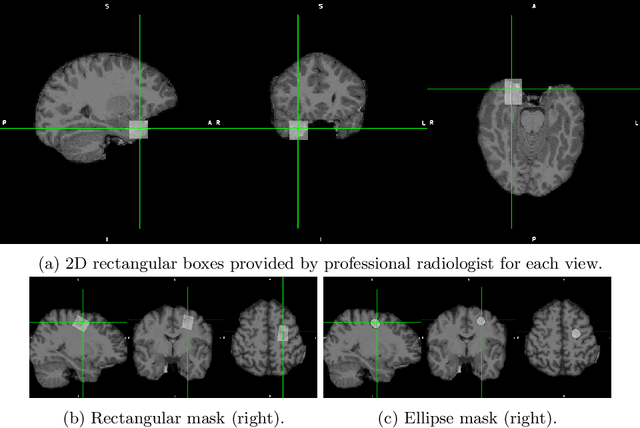

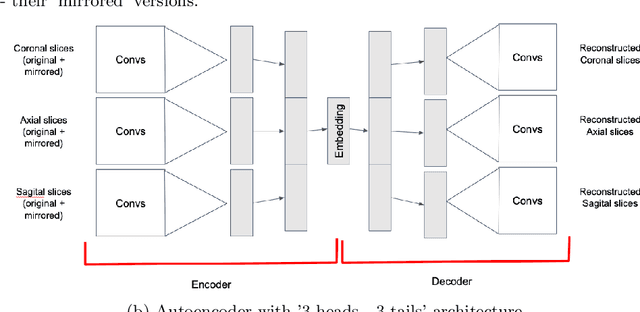
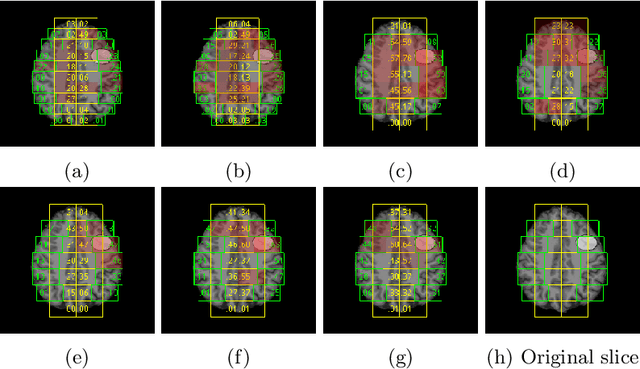
Abstract:Focal cortical dysplasia (FCD) is one of the most common epileptogenic lesions associated with cortical development malformations. However, the accurate detection of the FCD relies on the radiologist professionalism, and in many cases, the lesion could be missed. In this work, we solve the problem of automatic identification of FCD on magnetic resonance images (MRI). For this task, we improve recent methods of Deep Learning-based FCD detection and apply it for a dataset of 15 labeled FCD patients. The model results in the successful detection of FCD on 11 out of 15 subjects.
Fader Networks for domain adaptation on fMRI: ABIDE-II study
Oct 14, 2020Abstract:ABIDE is the largest open-source autism spectrum disorder database with both fMRI data and full phenotype description. These data were extensively studied based on functional connectivity analysis as well as with deep learning on raw data, with top models accuracy close to 75\% for separate scanning sites. Yet there is still a problem of models transferability between different scanning sites within ABIDE. In the current paper, we for the first time perform domain adaptation for brain pathology classification problem on raw neuroimaging data. We use 3D convolutional autoencoders to build the domain irrelevant latent space image representation and demonstrate this method to outperform existing approaches on ABIDE data.
Domain Shift in Computer Vision models for MRI data analysis: An Overview
Oct 14, 2020Abstract:Machine learning and computer vision methods are showing good performance in medical imagery analysis. Yetonly a few applications are now in clinical use and one of the reasons for that is poor transferability of themodels to data from different sources or acquisition domains. Development of new methods and algorithms forthe transfer of training and adaptation of the domain in multi-modal medical imaging data is crucial for thedevelopment of accurate models and their use in clinics. In present work, we overview methods used to tackle thedomain shift problem in machine learning and computer vision. The algorithms discussed in this survey includeadvanced data processing, model architecture enhancing and featured training, as well as predicting in domaininvariant latent space. The application of the autoencoding neural networks and their domain-invariant variationsare heavily discussed in a survey. We observe the latest methods applied to the magnetic resonance imaging(MRI) data analysis and conclude on their performance as well as propose directions for further research.
* 8 pages, 1 figure
Interpretable Deep Learning for Pattern Recognition in Brain Differences Between Men and Women
Jun 20, 2020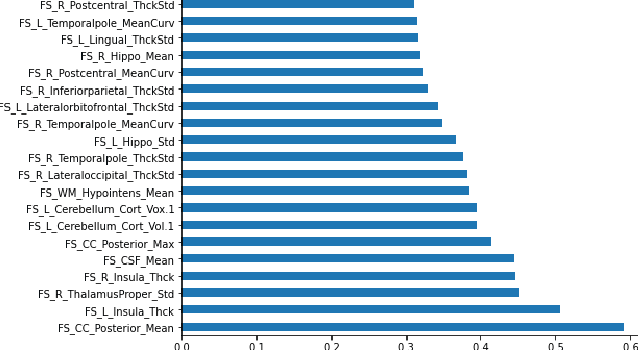

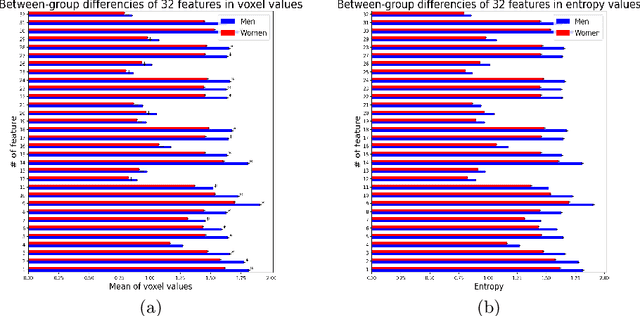
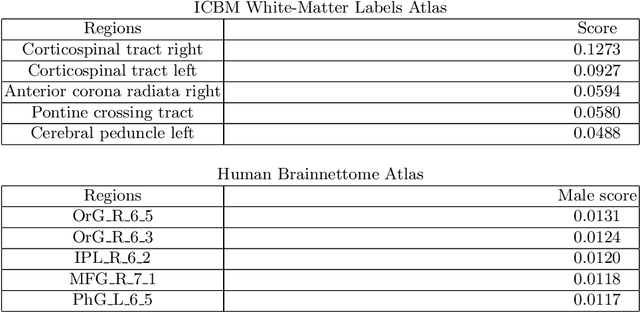
Abstract:Deep learning shows high potential for many medical image analysis tasks. Neural networks work with full-size data without extensive preprocessing and feature generation and, thus, information loss. Recent work has shown that morphological difference between specific brain regions can be found on MRI with deep learning techniques. We consider the pattern recognition task based on a large open-access dataset of healthy subjects - an exploration of brain differences between men and women. However, interpretation of the lately proposed models is based on a region of interest and can not be extended to pixel or voxel-wise image interpretation, which is considered to be more informative. In this paper, we confirm the previous findings in sex differences from diffusion-tensor imaging on T1 weighted brain MRI scans. We compare the results of three voxel-based 3D CNN interpretation methods: Meaningful Perturbations, GradCam and Guided Backpropagation and provide the open-source code.
Data-driven models and computational tools for neurolinguistics: a language technology perspective
Mar 23, 2020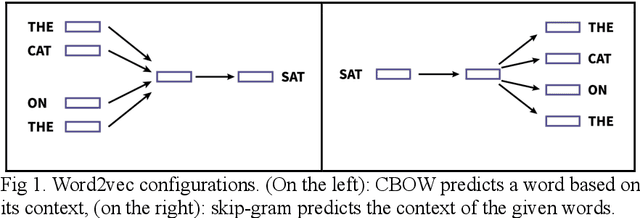
Abstract:In this paper, our focus is the connection and influence of language technologies on the research in neurolinguistics. We present a review of brain imaging-based neurolinguistic studies with a focus on the natural language representations, such as word embeddings and pre-trained language models. Mutual enrichment of neurolinguistics and language technologies leads to development of brain-aware natural language representations. The importance of this research area is emphasized by medical applications.
* 37 pages, 1 figure
Ensemble of 3D CNN regressors with data fusion for fluid intelligence prediction
May 25, 2019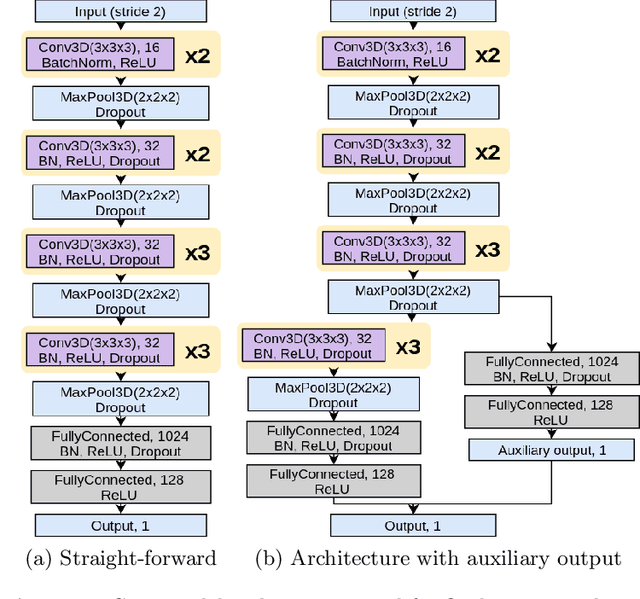


Abstract:In this work, we aim at predicting children's fluid intelligence scores based on structural T1-weighted MR images from the largest long-term study of brain development and child health. The target variable was regressed on a data collection site, socio-demographic variables and brain volume, thus being independent to the potentially informative factors, which are not directly related to the brain functioning. We investigate both feature extraction and deep learning approaches as well as different deep CNN architectures and their ensembles. We propose an advanced architecture of VoxCNNs ensemble, which yield MSE (92.838) on blind test.
* 10 pages, 1 figure, 2 tables
fMRI: preprocessing, classification and pattern recognition
Apr 26, 2018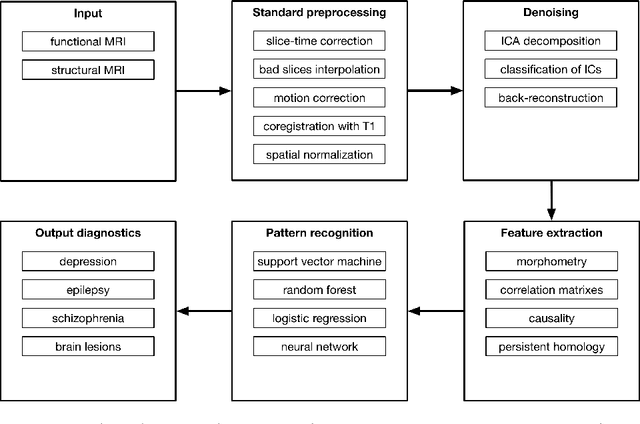

Abstract:As machine learning continues to gain momentum in the neuroscience community, we witness the emergence of novel applications such as diagnostics, characterization, and treatment outcome prediction for psychiatric and neurological disorders, for instance, epilepsy and depression. Systematic research into these mental disorders increasingly involves drawing clinical conclusions on the basis of data-driven approaches; to this end, structural and functional neuroimaging serve as key source modalities. Identification of informative neuroimaging markers requires establishing a comprehensive preparation pipeline for data which may be severely corrupted by artifactual signal fluctuations. In this work, we review a large body of literature to provide ample evidence for the advantages of pattern recognition approaches in clinical applications, overview advanced graph-based pattern recognition approaches, and propose a noise-aware neuroimaging data processing pipeline. To demonstrate the effectiveness of our approach, we provide results from a pilot study, which show a significant improvement in classification accuracy, indicating a promising research direction.
Machine Learning pipeline for discovering neuroimaging-based biomarkers in neurology and psychiatry
Apr 26, 2018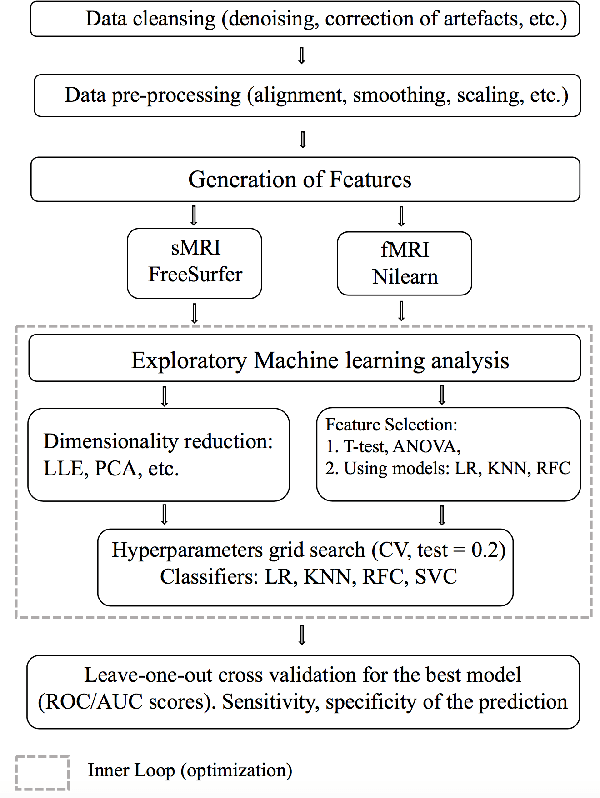

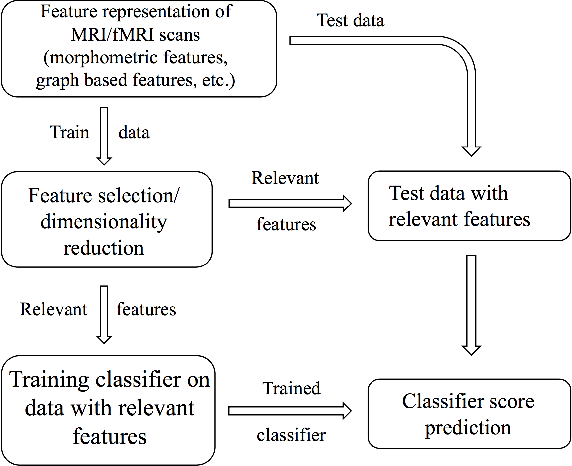

Abstract:We consider a problem of diagnostic pattern recognition/classification from neuroimaging data. We propose a common data analysis pipeline for neuroimaging-based diagnostic classification problems using various ML algorithms and processing toolboxes for brain imaging. We illustrate the pipeline application by discovering new biomarkers for diagnostics of epilepsy and depression based on clinical and MRI/fMRI data for patients and healthy volunteers.
 Add to Chrome
Add to Chrome Add to Firefox
Add to Firefox Add to Edge
Add to Edge